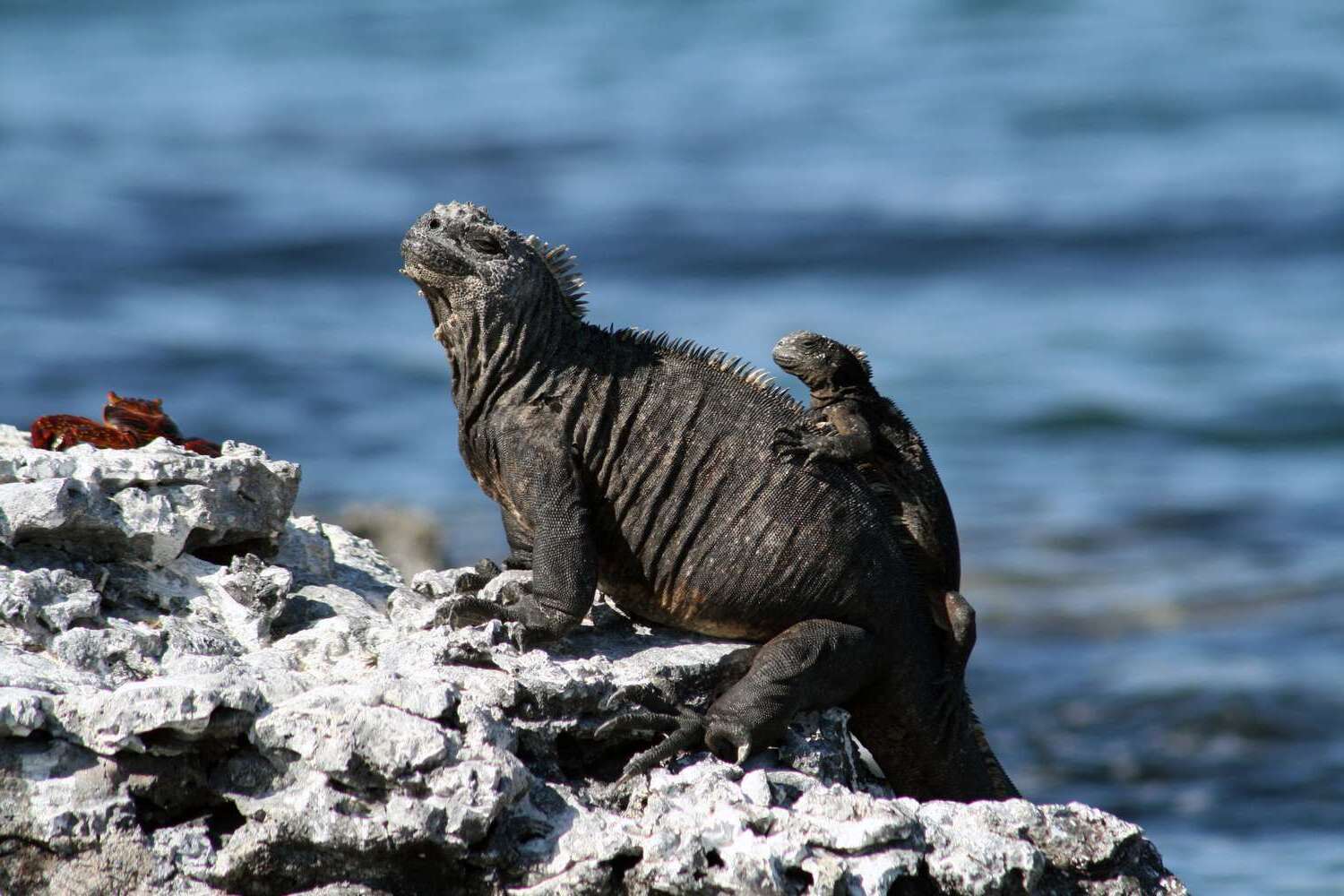
Ever wondered about the unique creatures that roam our planet? Well, marine iguanas are certainly among the most fascinating ones out there. These scaly, salt-spitting critters are not your average backyard lizard. Marine iguanas are the only lizards that have adapted to life in the ocean. Pretty cool, right? But what else is there to know about these intriguing animals? From their sunbathing habits to their peculiar diet, marine iguanas are full of surprises. If you're curious to learn more about these one-of-a-kind creatures, you're in the right spot. Get ready to dive into the world of marine iguanas, where every fact is as intriguing as the last. Who knows? You might just find yourself utterly fascinated by these extraordinary reptiles.
Key Takeaways:
- Marine iguanas are unique lizards that have adapted to life in the ocean, diving up to 30 feet underwater to graze on algae. Their dark color helps them warm up quickly after a cold swim.
- Conservation efforts are crucial to protect marine iguanas from threats like climate change and introduced predators. By understanding and preserving their habitat, we can ensure their survival and the health of the Galápagos ecosystem.
What Are Marine Iguanas?
Marine iguanas stand out as the only lizards that have adapted to life in the ocean. Native to the Galápagos Islands, these creatures have developed unique traits to thrive in their coastal habitat. Unlike their land-loving cousins, marine iguanas can dive up to 30 feet underwater to graze on algae, their primary food source.
-
Marine iguanas are unique to the Galápagos Islands, showcasing the archipelago's rich biodiversity.
-
They have the remarkable ability to dive and swim to find their food, setting them apart from other lizard species.
How Do Marine Iguanas Adapt to Their Environment?
Adaptation is key for survival, and marine iguanas have evolved several fascinating features to live comfortably both in and out of the water. Their dark coloration helps in absorbing heat from the sun after a cold swim, while their flattened tails and strong limbs aid in swimming.
-
Dark scales help these iguanas absorb sunlight efficiently, warming them up quickly after being in the cold ocean.
-
Salt glands, which are not found in most lizards, allow marine iguanas to expel salt from their bodies, a byproduct of their marine diet.
The Diet of Marine Iguanas
Marine iguanas are herbivores, with a diet consisting almost entirely of algae. They have developed sharp teeth to scrape algae off rocks, and their ability to dive allows them to access food sources that other iguanas cannot.
-
Algae make up the bulk of their diet, with some iguanas diving deep to graze on underwater algae beds.
-
Seasonal changes in food availability can cause marine iguanas to adjust their size, shrinking during times of scarcity to require less food.
Reproduction and Lifespan
Marine iguanas have a unique mating system that is closely tied to their environment. They are known for their synchronized mating seasons, which are influenced by the sea's temperature and food availability.
-
Females lay their eggs in burrows to protect them from predators and the harsh island sun.
-
Marine iguanas can live up to 12 years, a testament to their resilience and adaptability in the challenging Galápagos environment.
Threats to Marine Iguanas
Despite their adaptability, marine iguanas face several threats, including climate change, pollution, and introduced predators. These challenges have put them on the conservation radar, with efforts underway to protect their populations.
-
Climate change affects their food supply by causing fluctuations in sea temperature, which can lead to algae scarcity.
-
Introduced predators, such as dogs and cats, pose significant risks to eggs and young iguanas, impacting their survival rates.
Conservation Efforts
Conservationists are actively working to protect marine iguanas through habitat restoration, predator control, and research. By understanding more about these unique creatures, we can better protect them and the ecosystems they inhabit.
-
Efforts include habitat restoration projects to preserve the natural environment of the Galápagos Islands.
-
Research into marine iguanas' diet, behavior, and genetics helps inform conservation strategies to ensure their survival.
Marine Iguanas and Galápagos Ecology
Marine iguanas play a crucial role in the Galápagos Islands' ecosystem. As herbivores, they help control algae populations, which maintains the health of the coral reefs they feed on. Their unique adaptations also make them a key species for studying evolutionary biology.
-
By grazing on algae, marine iguanas help maintain the balance of reef ecosystems, ensuring their health and diversity.
-
Their unique evolutionary path offers insights into adaptive radiation, a process where organisms diversify rapidly to fill different ecological niches.
-
Marine iguanas symbolize the Galápagos Islands' unique biodiversity and the importance of conservation efforts to protect such irreplaceable natural treasures.
A Glimpse into Marine Iguanas' World
Diving into the world of marine iguanas offers a unique perspective on how life adapts and thrives in harsh environments. These remarkable creatures have shown us the power of evolution, adapting to munch on underwater algae and even developing a way to expel salt from their bodies. Their survival tactics, from group warming sessions to the dramatic dives for food, highlight nature's ingenuity. As we've journeyed through the fascinating aspects of their existence, from their unique feeding habits to their crucial role in their ecosystem, it's clear that marine iguanas are more than just inhabitants of the Galápagos Islands; they're vital players in the ecological balance. Protecting these extraordinary animals ensures the preservation of their intriguing world and the biodiversity of our planet. Let's cherish and safeguard these natural wonders for generations to come.
Frequently Asked Questions
Was this page helpful?
Our commitment to delivering trustworthy and engaging content is at the heart of what we do. Each fact on our site is contributed by real users like you, bringing a wealth of diverse insights and information. To ensure the highest standards of accuracy and reliability, our dedicated editors meticulously review each submission. This process guarantees that the facts we share are not only fascinating but also credible. Trust in our commitment to quality and authenticity as you explore and learn with us.


